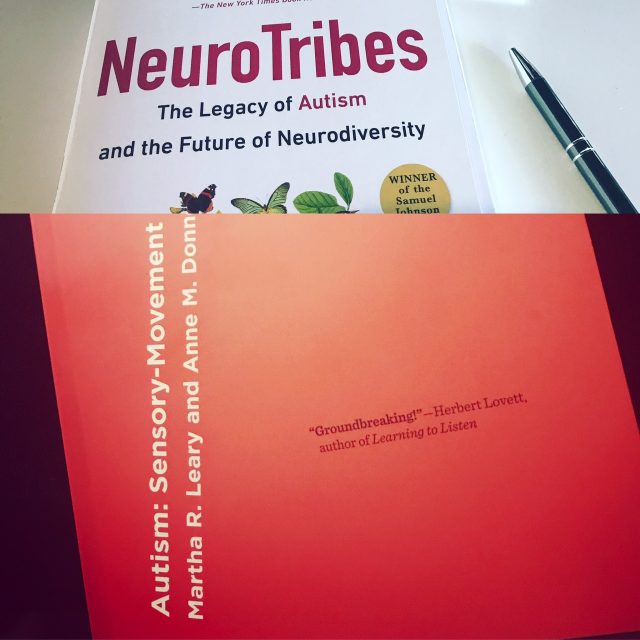Academic life makes for a busy 40 weeks. These include the 32 weeks of actual classes, meetings, defenses, and grading, along with the extra 8ish weeks of course prep and semester wrap-up.
These 40 weeks leave me busy enough there’s little to no time for non-teaching related activity. (Long-time readers may have noticed my blogging schedule has slowed waaaaay down over the past 3 years…and now you know why). This leaves the summer months for churning out writing, making headway on research, and getting caught up on reading.
This summer I’m making the rather ambitious personal goal of reading 6 work-related books. One month in and I’m two books down (right on schedule!). If you read this blog, these two are worth knowing about…
Review of NeuroTribes
First on the list was a book I’m been wanting to read since it came out in 2015—NeuroTribes: The Legacy and Autism and the Future of Neurodiversity. Written by journalist Steve Silberman, NeuroTribes aims to share the story and legacy of autism spectrum disorders.
In addition to being well-research and well-written, NeuroTribes has two key benefits that make it well worth the read:
- It offers a comprehensive history of how we came to know autism. Much of this history is sad, based on social and cultural assumptions of how children and adults “should” act or what intelligence “looks like.” However, much is also inspiring, particularly the rich, detailed mini-biographies of individuals who made significant scientific and/or artistic contributions…and who would likely have been institutionalized if born under different circumstances. There are also surprising (to me) relationships between the awareness of autism with world events and how they shaped our understanding of the condition (or lack thereof). This history is worth knowing for anyone who knows or works with someone with an autism diagnosis.
- In addition, NeuroTribes offers an alternate way of understanding autism as not a disability or something that needs “fixing,” but as a different way of being. Silberman refers to the “autistic brain,” a divergent way of wiring that can serve to move our scientific and artistic knowledge forward. In other words, if we are open-minded and compassionate enough, there can be a significant amount of value to what those with an autistic brain can contribute.
Finally, I also have newfound respect for Dustin Hoffman (of The Rainman) and fond reminiscences of my Iowa City days (shoutout to Wild Bill’s Coffee House).
Review of Autism: Sensory-Movement Differences and Diversity
Autism: Sensory-Movement Differences and Diversity is a second edition of the original 1994 Movement Differences and Diversity in Autism-Mental Retardation. I read the first book over 10 years ago, and it re-shaped my views not just of autism, but of disability in general.
This 2015 edition continues and expands the conversation authors Leary and Donnellan launched in the 90s. Their basic premise can be boiled down into several key concepts:
- Autism is a diagnostic label, miscategorized as a mental illness. Furthermore, so-called autistic “behaviors” are really as social constructs, currently viewed as things demonstrating a deficit or laziness, rather than as the neurological difference they should be framed as.
- Many behaviors dismissed as “bizarre” or “self-stimulating” in fact represent challenges in starting, stopping, executing, switching, or combining a motor, sensory, perceptual, communicative, cognitive, or emotional “movement.” (This is a mouthful, yes, but it also significantly shifts how we frame the purpose, role, and potential accommodations of these behaviors and our response to those who exhibit them.)
- Accommodations are personal strategies to help individuals cope with and/or work through these differences. The “bizarre” or “self-stim” behaviors we see do not need “fixing;” rather, they may need to be accommodated in order for the individual to relate to others, communicate, and live to his or her fullest potential.
This is, of course, an oversimplification. Throughout the book, Leary and Donnellan flesh out these ideas, offering context and examples to support their points. Though I found the book a tad repetitive, it changes the conversation and offers an important shift in thinking of how we view autism.
Another must-read.



 orcid.org/0000-0001-8665-1493
orcid.org/0000-0001-8665-1493






{ 0 comments… add one now }
You must log in to post a comment.